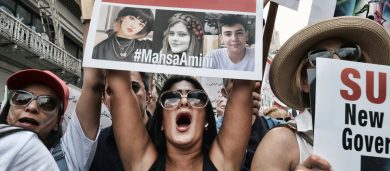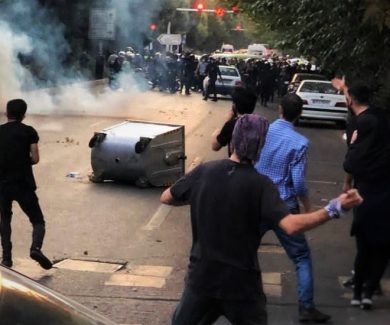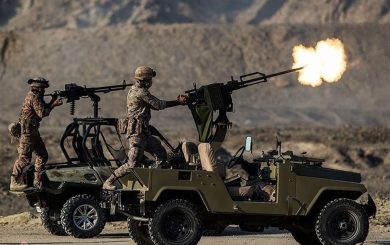In the Islamic Republic of Iran, the hijab is far more than a piece of clothing — it has become a symbol of state control, gender apartheid, and ideological domination. For Iranian women, removing the hijab is not just a fashion choice; it is a political act, a form of civil disobedience, and a silent yet powerful protest against the repressive regime of the Islamic Revolutionary Guard Corps (IRGC).
This article explores how the hijab, once promoted as a tool of religious modesty, has been redefined by Iranian women as a symbol of resistance — one that challenges the very foundations of the Islamic Republic’s gender policies and calls for broader societal transformation.
1. The History of Compulsory Hijab in Iran
After the 1979 Islamic Revolution, the Islamic Republic enforced strict religious laws, including mandatory hijab for all women. By 1983, refusing to wear the hijab in public became punishable by law.
The hijab became:
• A tool of state control over women’s bodies and choices.
• A visible marker of the regime’s ideology.
• A mechanism to suppress dissent, especially from women.
Through the IRGC and its associated morality police, the regime polices public behavior and uses the hijab as a litmus test for loyalty to the Islamic Republic.
2. The Hijab as a Weapon of Control
The IRGC enforces hijab laws through:
• Surveillance cameras in public spaces.
• Plainclothes officers monitoring behavior.
• Morality police patrols, especially in urban areas.
• Fines, arrests, beatings, and even imprisonment for non-compliance.
For many women, the hijab is no longer a religious expression but a forced uniform representing oppression. Choosing not to wear it is not an attack on Islam — it is a demand for autonomy, choice, and human dignity.
3. Silent But Defiant: The Rise of Hijab Protests
The most iconic act of protest emerged in 2017 with the “Girls of Revolution Street”, when women began standing silently in public without their hijabs, waving them on sticks. These images went viral and inspired a wave of peaceful, visual dissent.
This act of silent rebellion is significant because:
• It is nonviolent but deeply political.
• It invites both solidarity and backlash, making it inherently risky.
• It reclaims the female body as a site of resistance.
The regime’s response was swift and brutal, with many women beaten, arrested, and sentenced to prison. But the movement grew.
4. Mahsa Amini and the Spark of a Revolution
The death of 22-year-old Mahsa Amini in September 2022, after her arrest by morality police for improper hijab, triggered the largest anti-regime protests in decades. For millions, Mahsa became a martyr of resistance.
Chants of “Women, Life, Freedom” spread across Iran and the world. The hijab, once imposed in silence, became the center of a national uprising led by women, supported by men, and resonating across generations.
5. The Symbolism Behind Removing the Hijab
For Iranian women, removing the hijab is:
• A rejection of state ideology.
• A demand for bodily autonomy.
• A declaration of selfhood in a system that seeks to erase female identity.
Even in silence, it sends a loud message:
“I do not belong to the state. I am free.”
6. IRGC’s Response: Fear, Force, and Failure
The IRGC has responded with:
• Harsh prison sentences for those protesting hijab laws.
• Violent crackdowns on street protests.
• Surveillance technology to identify unveiled women.
• Threats against families of activists.
Despite this, the number of women appearing in public without hijab has risen, signaling the failure of fear as a long-term strategy.
7. Resistance Beyond Borders
Iranian women in the diaspora have also joined the movement:
• Posting hijab-free photos under hashtags like #MyStealthyFreedom.
• Organizing global protests in solidarity with women in Iran.
• Lobbying governments to designate the IRGC as a terrorist organization and hold it accountable for gender-based violence.
Their voices have helped build international pressure and keep Iran’s women-led resistance in global headlines.
8. Cultural and Psychological Dimensions
The hijab protest is not only political; it’s also deeply personal:
• It involves years of psychological conditioning.
• It defies familial, societal, and religious expectations.
• It is an act of personal healing and collective trauma recovery.
These silent protests humanize the political struggle, showing the world that the fight is about more than ideology — it’s about identity, dignity, and liberation.
9. Global Solidarity and the Role of International Media
The global community plays a key role in amplifying hijab protests:
• Covering women’s stories in mainstream media.
• Supporting secure digital communication tools for activists.
• Encouraging governments to protect Iranian refugees and asylum seekers.
• Supporting organizations documenting gender-based violence by the IRGC.
Global solidarity helps protect lives and ensures that silent protests are not ignored.
10. The Hijab Protest as a Catalyst for Broader Change
While the hijab may appear to be a single-issue protest, it represents a gateway to wider demands:
• Freedom of expression
• Secular governance
• Rule of law
• Gender equality
What started with a scarf is turning into a people-powered movement that threatens to reshape Iran’s future entirely.
Conclusion: The Hijab as a Silent Scream for Freedom
In a country where speaking out can mean death, Iranian women have found a way to speak volumes in silence. The act of removing the hijab is simple yet revolutionary. It is a protest, a prayer, and a promise all at once.
The regime, led by the IRGC, has failed to suppress this form of rebellion because it’s rooted in personal truth and moral clarity. Iranian women have turned the hijab from a symbol of control into a flag of freedom—and the world is watching.
Join Our Newsletter!
Stay informed with the latest updates, news, and ways to take action in the fight for justice and global security. Sign up now to get updates delivered straight to your inbox!





